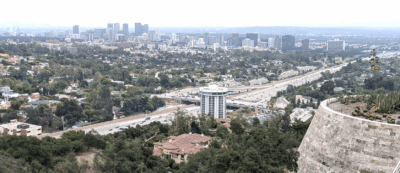
This weekend, I took time to peruse exhibits at the Getty Art Museum in Los Angeles. My day at the museum featured beautiful views of the city, a tranquil garden walk accompanied by the sound of water features, and the chance to visit the store to add more books to my reading collection. What I didn’t expect was a powerful reminder that biased media is nothing new.
As I moved through galleries filled with sculptures, paintings, tapestries, drawings, and other forms of art, I noticed that some of the same myths and historical events were often depicted in completely different ways depending on the artist, time period, and their location. While in one room I may have seen pieces that paint characters in an event with angelic, hopeful features, in another room I observed paintings of the event with same characters with sorrowful, mournful countenances. Rather than seeing these differences as random, I noticed they reflected the purpose of the work and the audience it was meant to reach. Artists were shaping narratives by choosing what to highlight, what to omit, and what message to send. This made me think of the media present today, whether it stems from musicians, social media creators, news outlets, visual artists, or political cartoonists.
Today, our students are growing up in an era where media from TikTok to YouTube to AI curated feeds constantly delivers content designed to keep them glued to their device. Algorithms pull students into echo chambers of belief, often without their awareness. Just like the art I saw at the Getty, today’s media is created with intent, created with specific audiences in mind.
This realization reminds me once again that history/social studies is a vital content area for the students of today. History isn’t just about memorizing dates or facts. Instead, history teaches students to question sources, spot perspective, and understand that every piece of media, past or present, carries a point of view. Like my co-author Adam Juarez and I indicate in our new book History Matters in an AI Era, if we want our young learners to navigate an AI-driven world with skeptical curiosity and a critical eye, we need to teach them these skills early.
Here are some ways teachers can use history and media examples in different grade spans to help students see and question bias:
K–2 Example: Spotting Point of View in Picture Books
Read two picture books that tell the same folktale (for example, different versions of Cinderella from around the world). Ask students: What details are the same? What’s different? Why might the author or illustrator have chosen to tell the story this way? This builds the foundation for recognizing perspective and supports awareness for varying cultures across the globe.
3–5 Example: Comparing Weather Headlines
Give students two different newspaper or online headlines about the same weather event (for example: “Rain Brings Much Needed Relief” vs. “Rainstorm Causes Heavy Flooding”). Ask: How do these headlines make you feel? What do they focus on? Why might the writers have chosen these words?
6–8 Example: Newspaper Coverage of the Same Event
Provide students with excerpts from two different newspapers reporting on the same event (for example, the Civil Rights March on Washington). Have them highlight differences in tone, word choice, and focus. Then, ask: How do these choices shape what the reader believes? How does this compare to the way media today might cover the same event?
9–12 Example: Propaganda Posters vs. Modern Ads
Invite students to examine World War II propaganda posters alongside modern advertising campaigns or social media posts. Prompt them to analyze: What emotions are being appealed to? What techniques are being used to persuade? What’s the purpose behind the message? This helps students connect historical bias to the digital persuasion they encounter daily.
If you are looking for more media literacy resources for your classroom, I encourage you to check out News Literacy Project (newslit.org) and Common Sense Media (commonsensemedia.org). If you are a teacher in grades K-8 looking to fit history and media literacy into a crowded curriculum, feel free to check out History Matters in an AI Era: Interdisciplinary Approaches for K-8.
Walking through the Getty museum reminded me that every image, every story, every piece of media is part of a larger conversation about perspective and purpose. Teaching our students, especially our youngest, to recognize this is essential. Media literacy conversations can be embedded into nearly any content area. I encourage you to start the discussion during your next class period.
Discover more from Katherine Goyette
Subscribe to get the latest posts sent to your email.
